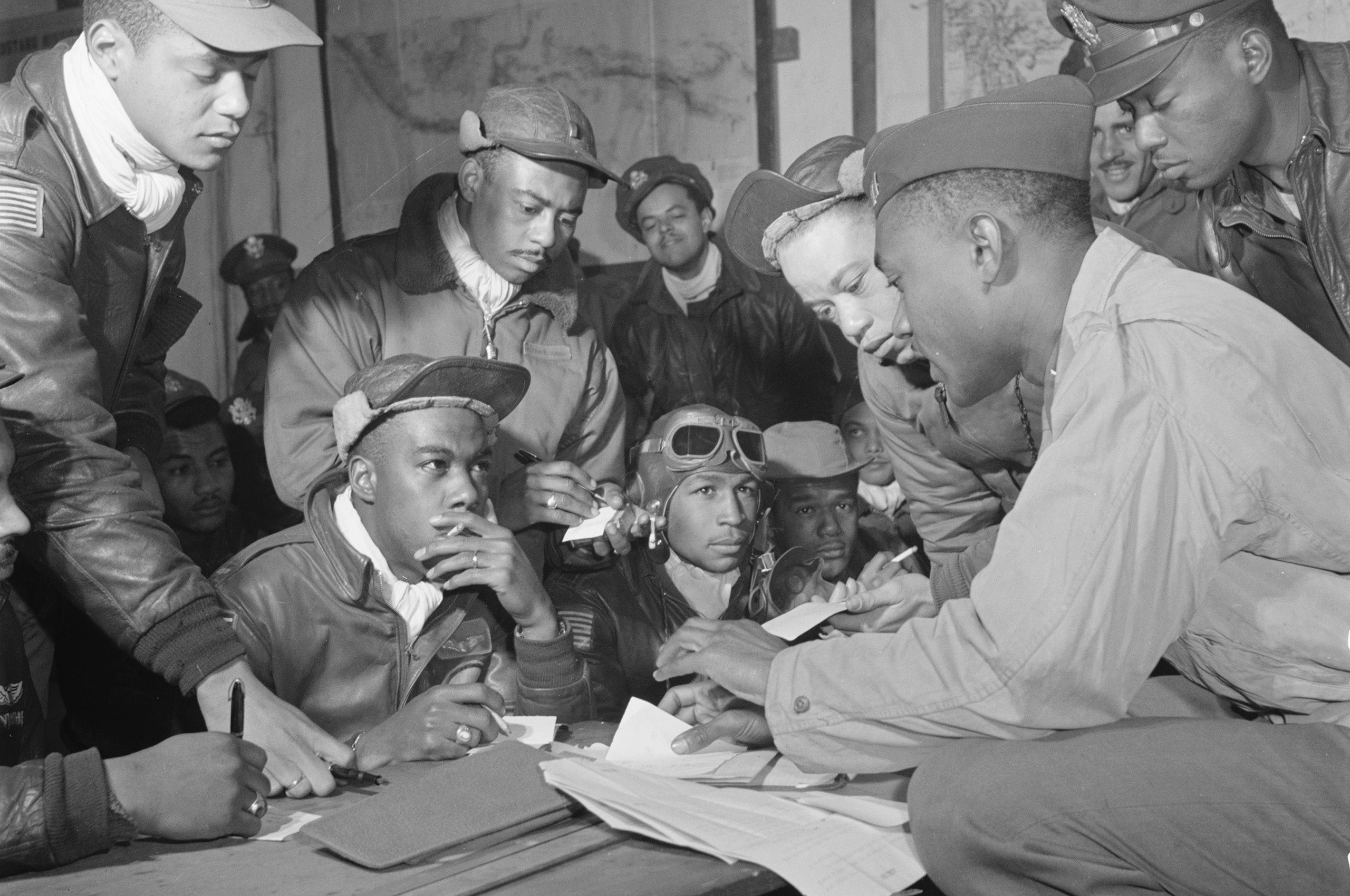
Before 1941, American Black military men weren’t allowed to be fighter pilots. They were limited to positions as cooks or stewards.
That changed in 1941 when the United States Department of War authorized the creation of an all-Black fighter unit, the 99th Pursuit Squadron. In his 33rd film, documentarian filmmaker Tim Gray ’89 tells the story of the squadron, commonly known as the Tuskegee Airmen, whose record of success would smash racist presumptions about their fitness for service and contribute to the desegregation of the military just seven years after the squadron’s formation.
Gray’s new film The Tuskegee Airmen: Return to Ramitelli uses as its locus the ruins of the airmen’s operations building in Ramitelli, Italy, reconstructing its history with animation, interviews with Tuskegee veterans and historians, and World War II-era film footage. Grammy Award-winning musician Darius Rucker narrates.
History is to be read and seen and felt, says Gray, president, and founder of the World War II Foundation. For The Tuskegee Airmen, that entailed a 10-day trip to Italy to ensure all details were on point—especially the animation work to reconstruct what the Ramitelli base looked like in the 1940s.
“We spent a lot of time at Ramitelli; we relied heavily on the landscape of Italy. We always go back to the places where the story plays out because that’s where the ghosts are,” Gray says. “The ghosts are not in some studio in Cranston, Warwick, or Burlington, Vermont. The ghosts are where the story played out, whether in Auschwitz, Normandy, or Guadalcanal.”
Tuskegee Airmen premieres in Washington, D.C., on February 9 at the National Museum of African American History and Culture in Washington, D.C. In addition to the film’s screening, Tuskegee airman and WWII pilot Harry Stewart, featured in the film, will receive the 2023 Sen. Bob Dole World War II Foundation Leadership Award.
A country changed
The Tuskegee Airmen also features commentary by General Charles Q. Brown, Jr., chief of staff of the United States Air Force, who characterizes the pilots’ contributions as seminal in the desegregation of the American military. In July of 1948, President Harry S. Truman signed an executive order ending the practice of segregating its service members.
“[The Tuskegee Airmen] helped frame what President Truman was able to do with the executive order, to integrate the services and so, from that aspect, their hard work actually proved that anybody, if given the opportunity, can excel,” Brown says in the film.
In the film’s final moments, the filmmakers note that by 1945, more than 1.2 million Black Americans were serving in uniform stateside, in Europe, and the Pacific. This number includes thousands of Black women serving in the women’s auxiliaries. It also highlights other statistics, contributions, and accomplishments of the Tuskegee Airmen and support personnel, including the following:
-
- One thousand pilots graduated from Tuskegee Air Force Training; 355 served overseas, and 32 were captured as prisoners of war.
- Tuskegee Airmen accounted for 15,533 combat sorties.
- Fourteen thousand Black American men and women served as support personnel to the Tuskegee Airmen.
- The Tuskegee Airmen earned eight Purple Hearts, 14 Bronze Stars, three Distinguished Unit Citations, and 96 Distinguished Flying Crosses.
A dream made possible
Syracuse University student and aspiring filmmaker David Barbier, Jr. accompanied the filmmakers to Italy and provided some of the film’s closing commentary. Before the Tuskegee Airmen, Barbier says, “There wasn’t anybody who looked like them doing the things that they were doing. When you don’t see anybody who looks like you doing the thing you want to do, it can be discouraging.
“And, so, to be that fire, to be that trailblazer who says, ‘No, I can do it. No, we can do it,’ you know it enables more people to do the thing they set out to do, the dream they want to achieve.”
It’s a dream fulfilled whose memory still moves Tuskegee Airman Harry Quinton. In the documentary, he characterizes the contribution of the Tuskegee Airmen as one that changed the country’s trajectory.
“I’m glad I had the opportunity to participate in something that helped change the direction which this country was going in,” Quinton says. “And my people were going.”
“You can see it in their eyes; they’re reliving every part of the story.”Tim Gray
Gray says it’s an honor to collect and share such stories.
“You can see it in their eyes; they’re reliving every part of the story,” he says. “And that’s vitally important to understanding who they are and what they experience. So to go back to places like Ramitelli, to touch it, to visualize it, gives you a whole different perspective when you sit down and write the film.”
A history preserved
“I don’t necessarily believe in ghosts, but I believe in the presence of people who were there,” Gray continues. “If you lose that perspective, then you have lost the history of it. And so that’s how we approach every project, but especially ones like this where there’s this building that is telling this amazing story.”
And in the absence of a physical memorial—the Italian government is trying to obtain the airmen’s operations building, but for now, it is privately owned—Gray’s documentary serves to preserve the stories of the Tuskegee Airmen. And that extends to the unit’s fallen members. Gray speaks with reverence of the Tuskegee Airmen who lost their lives in World War II.
“These men died before they knew of Martin Luther King, Obama, Thurgood Marshall, or Jackie Robinson. They didn’t know that the impact they had would extend for centuries. They never saw how their actions changed society or secured democracy. There are so many stories wrapped up within one story. So that one building, to me, well, you go back there, and the tentacles of that one building reach out so far that it’s incredible.
“And if we can tell that story in a documentary, I think it’s a success.”
The Tuskegee Airmen: Return to Ramitelli will begin airing on public television and PBS stations nationwide in May.
—By Marybeth Reilly-McGreen

